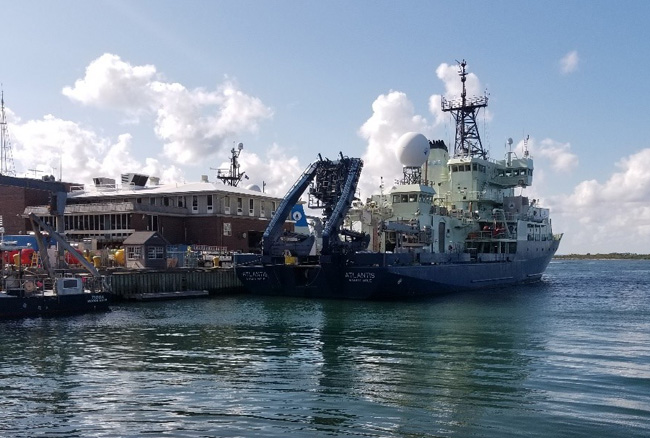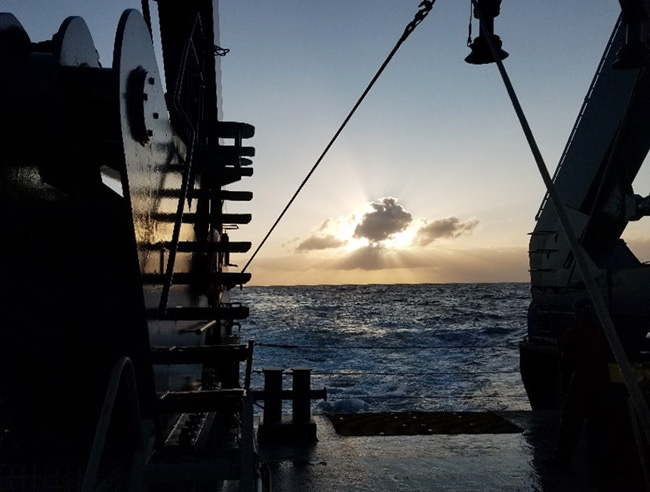by Sean A.
Ahoy from the North Atlantic!
I am a University of Georgia graduate student in Elizabeth Harvey’s lab at UGA Skidaway Institute, and I study phytoplankton, the microscopic cells that power life in the ocean. Currently, I am sailing across the Atlantic Ocean for a month on the Research Vessel Atlantis. I am thrilled to be on the high seas, working with experts in the field and contributing to a multi-year project called NAAMES aimed at better understanding the biology and chemistry of the north Atlantic. Best of all, I get to sample what I love – phytoplankton. I thought it would be fun to document some of my experiences at sea and give you guys the inside scoop of what life is like on a research cruise.

The R/V Atlantis before departure at port in Woods Hole, Mass.
The days on a research cruise are long. A typical day on the Atlantis for me begins at 2 AM. If you are not a morning person (like me), coffee becomes a necessity. Luckily, there is always a pot of coffee brewing, which is good considering there are 30+ scientists and crew members looking to slug down a cup before their shift. Operations on the ship are 24/7 and researchers must meticulously plan when to deploy their instruments and run experiments. On top of that, operating a ship and its equipment is expensive, so every hour of ship time matters! A shift at sea can last 16+ hours, with an occasion nap here or there. It is always acceptable to take a quick step outside, get some fresh air and marvel at the blue waters.

Taking a break to see an amazing view from the back deck.
Our research team uses a CTD (Conductivity, Temperature and Depth) sensor which has large sampling bottles attached that are closed at the depth of our choosing which we determine by monitoring the electronics back on ship. This is the best way to “trap” water from beneath the ocean and preserve phytoplankton communities in their natural state. The CTD arrives back on deck and we go to work, quickly preparing experiments with the collected water and measuring the abundance and size of the phytoplankton we see. After the morning sampling, we regroup and begin preparing for the next sampling day which involves labeling tubes, washing bottles and, of course, analyzing data. Yes, to no surprise – there are no days off on a research cruise. Finally, after dinner we can grab some much-needed sleep.
We are planning to sample at 7 different stations in the north Atlantic, which means plenty of phytoplankton to look at and many cups of coffee to drink!
Till next time,
Sean A.


